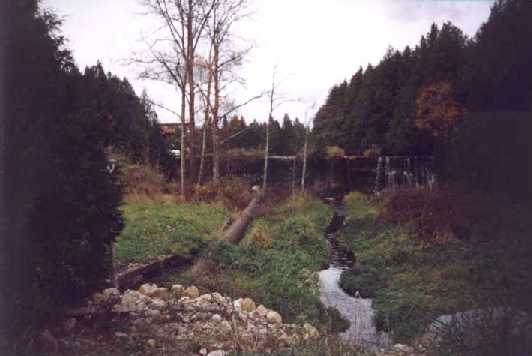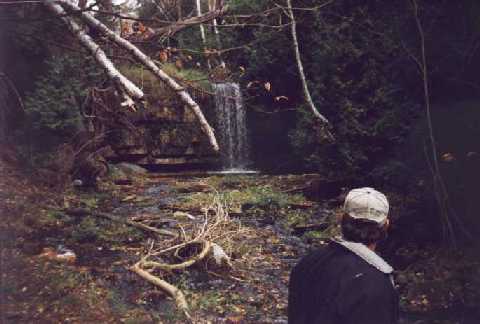
so named by the Pioneers two centuries prior - because of its wonder and power.
It is at the main Ark site.
| MENU: HOME » Reconstruction » Recovery » Renewal » Energy Types |
|
at Ark Two | |
 |
|||
|
so named by the Pioneers two centuries prior - because of its wonder and power. It is at the main Ark site. |
|||
 |
At one time there were over fifteen mills in the village. The water would be captured at one dam and then released down to another. There was more water year round in those days because the forests held snow to melt for much longer seasons, and truly there was much more snow in the winters. But this is still the water above our dam. | |
 |
|||
| The way the system would work is that the water would be allowed to build up behind the dam above the falls and then it was let out through the flume in a great rush for a few hours until the water pressure was exhausted. Then the system was shut down and the water was allowed to rise up behind the dam again before the machinery could be started again. In this way the water flowed and stopped in the stream - on again and off again on its way down to the next dam - something that would not be permitted today. | |||
 |
From the dam, under the road and then on to and over the falls there is a flume.
| |
 |
Here you can see the flume that brought the water from the dam on the other side of the road and over the cliff. | |
 |
Down below the cliff there is still the old water turbine that was used to power the machinery by driving belts.
| |
The first mill produced what was called Little Wonder Flour. The flour industry, however, was eliminated by the arrival of the railroad which brought hard wheat flour from the western provinces. Hard wheat flour was much preferred over the soft wheat flour produced locally.
 |
|||
|
Today with much improved electrical generation technology and the significant fall of the property on downstream from the present turbine location the falls could produce a substantial amount of electricity. Certainly enough to power the village. However, under the current bureaucratic situation, at the time of this writing, such an effort would be completely impractical to undertake. Perhaps in the future there will be different circumstances.
|
|||
The battle with bureaucracy has been immense over the years - and certainly preceding my generation. Two large power generating systems were about three miles further downstream from us. One supplied power to several communities for about 20 miles around. The government, in order to gain economies of scale for larger projects purchased and shut down these and many other smaller producers in the early 1900s. There was a revival in the 1930s during the Great Depression when the farmers could not afford to buy the government power and started a new power house at one of the dams. Once again the government bought it out and then dynamited the dam - so that wouldn't happen again.
At the time of this writing there is much lip service given to environmental concerns and the encouragement of "green" energy. But it is only lip service. The costs of getting through the bureaucratic hoops are so immense that it is totally impractical to try. But, in another time the need for these power sources may come into existence.
We continue to study the systems and gather the materials for that possible future time. On other pages, while explaining about different waterpower electricity generating approaches, I show the figures that engineers have given in our techincal studies and some of the equipment we have identified that we could assemble after a nuclear war to make this site operational.
| MENU: HOME » Reconstruction » Recovery » Renewal » Energy Types |